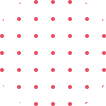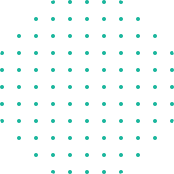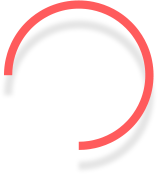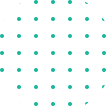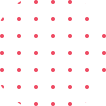Syllabus :Unveiling the Academic Roadmap for Success
ADVANCED CERTIFICATION SKILL DIPLOMA IN PANCHAKARMA THERAPY IN AYURVEDA
SUBJECTS:
- 1. Moola siddhanta of ayurveda (Basic principles of Ayurveda)
- 2. Basics of Anatomy & Physilogy of the human body
- 3. Panchakarma Part I
- 4.Panchakarma Part II
- 5. Practical I
- 6. Practical II
PANCHAKARMA COURSE - SYLLABUS:
-
1. MOOLA SIDDHANTA OF AYURVEDA:
UNIT-1: Definition - ayurveda, four goals of life origin of Ayurveda, The eight branches of
ayurveda,The Brihatrayees and Laghutryees, Panchbhuta tattyva, Tridosha- Vatta, Pitta &
Kapha- Qualities. Actions formation sthana (Place) in the body based on day &night age saptha
dhatus Rasa Rakta Mamsa Medas ,Asti Majja sukra &sronita their formation, functions.
Trimalas - Purisha, Mutra, Seda - Formation and Functions.
Agnis - Sapta dhatnagni, Panchabhutagni, Jataragni.
Vegas (Urges)- 13 Types pf Vegas- Vegas to be controlled - Vegas to be not controlled.
Definition of diseases, Synonyms of Roga.
Classification of diseases- Sadhya, Asadhya.
Classification of diseases based on tridoshas, Vata - 80, Pitta- 40, Kapha- 20. -
UNIT-2: ROGANIDHANA
Shadkriyakalas, Rogi pareeksha - Trividha pareeksha- DARS’ana, Spars’ana & Pras’na, Ashtasthana pareedsha.
-
UNIT- 3: ROGA - VINISCHAYA
The diseases Causative factors, signs & synotoms, classifications, sadhya- asadhya- in a compact format. -
UNIT- 4: DRAVYAGUNA
Aknowledge on - Rasa, Guna karma virya vipaka and prabhava of herbs and other resources. -
UNIT- 5: BAISHAJYA KALPA
Knowledge on the usage of Aushadi according to tridoshas, Types pf aushadivarious
formulations in ayurveda Ashada kala. -
UNIT- 6: KAYA CHIKITSA
Treatments for the various diseases. Aknowledge on the steps applied in the treatment of the
diseases according to the sastra.
-
UNIT-1: Knowledge on various systems of the body. Definition of Anatomy and Physiology.
Comprehensive Study of Skeletal system, Muscular system, Nervous system, Respiratory
system, Circulatory system, Digestive system, Urinary system, Reproductive system,
Excretory system, skin and Endocrine system -
UNIT- 2: Examination of Blood Pressure, Pulse, Temperature, and other structural and
functional measurements of the human body. Awareness of normal Anatomical and
Physiological values. Marma (Vital Points): word meaning, concept, definition, classifications and applied aspects in therapies.
-
UNIT- 1: GENERAL INTRODUCTION TO CHIKITSA- a) Samsodhana. b) Samsamana
-
UNIT-2: SIX TYPES OF CLASSICAL THERAPY (SHADUPAKRAMAS)
1.Langhana,2. Brimhana,
3.Rokshana,
4.Snehana,
5. Swedana,
6. Stambana
-
UNIT-3:
Abhyanga Chikitsa and its classification on various criteria.
-
UNIT-4:
THE CLASSICAL AYURVEDIYA PANCHAKARMA - THE STAGES OF PANCHAKARMA TREATMENT
A) PURVA KARMA,
B) PRADHANA KARMA AND
C)PASCHAT KARMA.
-
UNIT-5:
Classification of Panchakarma according to kaya chikitsa and shalya.
-
UNIT- 6:
SCOPE OF PANCHA KARMA
-
UNIT-7: PURVA KARMA:
Snehana karma - Properties, basic sources of sneha dravyas, indications of snehana, contra -
indications of snehana, procedures of snehana, anupana in sncana, observations of the
patient –a) features of samyak snehanaq (adequate),
b) features of asamyak snehana (in
adequate),c) features of atisnighana (excessive)
d) sneha vyapada, post snehana regimen.
-
UNIT- 8:
SWEDANA KARMA:
Classification – sagni & Anagni, Indications, contra- indications, procedure of swedana, observations of the patient-a) Samyak sweda,
b) Asamyak sweda,
c) Ati sweda, post swedana regimen, mode of action of sweda.
-
UNIT- 9:
PRADHANA KARMA:
Classification according to kaya chikitsa & shalya. -
UNIT-10:
VAMANA KARMA:
Introduction, pharmacodynamic properties
of vamaka dravyas, indications, contra-indications, procedure of vamana, pathya – apathya, samyak vamana, asamyak vamana, ati
vamana sam sarjana karma. -
UNIT- 11:
VIRECHANA KARMA:
Introduction, Virechana drugs, indications of virch, Ana, contra- indications procedure of virechana, general precautions, samyak virechana, asamyak virechana, ati- virechana, virechana vyapada.
-
UNIT- 1:
KARMA
Introduction Classification, Indications for Asthapana, Contra-indications for Asthapana,
Indications for Anuvasana, Contra- indications for Anuvasana, Procedure of Vasti, Post Vasti,
Regimen, Vasti Vyapada. -
UNIT-2:
SIRO- VIRECHANH KARMA (OR) NASYA KARMA:
Introduction, Classification, Navana nasya, Avapida nasya, Pradhamana nasya, Dhuma nasya, Marsa- Pratimarsa nasya, Nasya drugs, And their procedcodynamics, Indications,
Contraindications, Procedure of nasya, Post nasya regimen, Samyak nasya, Asmyak nasya,
Ati nasya, Nasya vyapad. -
UNIT- 3:
RAKTHAMOKSHANA:
Introduction Classification, Features of normal rakta, Functions of rakta, Indications of
raktamokshana, Contra- mokshana, Jalauka avacharana, Sira- Vyadha.Indications contra –
indications, Samyak, Sira- Vyadha, Asamyak sira- Vyadha, Ati sira- Vyadha, Rakta stambana,
Post – Rakta mikshana regimen, Prachana, Alabu, Ghati- Yantra. The vahih parimarjana
therapies of Ayurveda – an introduction. -
UNIT-4:
KERALIYA PANCHA KARMA
Keraliya panchakarma- Its five components, Dhara Kaya seka, Pinda- Sweda, Anna lepa, Siro
lepa - Introduction, Comparison of classical Ayurveda panchakarma & Keraliya Panchakarma. -
UNIT-5:
DHARA:
Introduction Classifications, dhroni – Vidhanam Sarawavidhara, Stri- Stanya Yukta kshra dhara, Thaila dhara, Kwatha (Ausadhi0dhara, Siro- Dhara procedure. -
UNIT-6:
KAYASEKA:
Introduction, The Procedure. Complications.
-
UNIT-7:
PINDA SWEDA (OR) NAVARAKIZHI :
Procedure, Preparation of pottali and payasam, Ela kizhi, Podi – kizhi-procedure. -
UNIT- 8:
ANNALEPA :
Introduction, Preparation of Anna lepa, Method of treatment. -
UNIT- 9:
SIROLEPA:
Introduction, Preparation, Method SIRO -
UNIT-10:
VASTI :
Introduction, Preparation, Method -
UNIT-11:
UDVARTANA :
Introduction, Preparation, Method.
Course Includes:
- Duration: 11 months
- Placement: Assured
- Certificate: Yes
- Subjects: 6
-
Marks in Toatal:
600
Syllabus :
ADVANCED CERTIFICATION SKILL DIPLOMA IN BEAUTY AND WELLNESS
SUBJECTS:
- 1. Basic Beauty Care
2. Skin care and Face make-up
3. Hair care
4. Spa Therapy and Food diet
5. Practical I
6. Practical II
COURSE SYLLABUS :
-
UNIT – 1:
Introduction & importance of beauty care, importance of personal hygiene,
personal grooming. Sterilization and sanitation – purpose, methods, do’s and don’ts
professional ethics -
UNIT – 2:
eye brow shaping: Materials required, Tweezing and Threading, Different types of
threading, different types of eye brows, and keeping in mind the face structure -
UNIT – 3:
Manicure and pedicure: Definition purpose, introduction tools and equipment
application of creams and lotion, methods/types of pedicure and manicure. Head and leg
massages step by step procedure. -
UNIT – 4:
Nail Art: Factors affecting nail growth. Introduction- equipment’s and tools, types
of nail polish, application and their methods. Different methods of nail art.
Mehandi: introduction, preparation of Mehandi paste, Mehandi cone preparation and
application on hand and leg.
-
UNIT – 1:
Skin: Introduction & importance of skin care, Factors affecting on skin, Skin care for
different season, Home remedies for skin care. -
UNIT – 2:
Skin Problems: Classification & Identification of Common skin problems – Acne, Blackheads,Whiteheads, Disorder of sweat glands, Disorder of oil glands, dryness, and
dullness. -
UNIT – 3:
Cleansing & Scrubbing: - (1): Cleansing - Definition of cleansing, Types of cleansers, Method of cleansing, Benefits of cleansing, Natural Cleansers.
2) Scrubbing -What is scrubbing, Importance of scrubbing, Types of Scrub, Benefits of
scrubbing, Contraindications of scrubbing, How to remove black heads & white heads by using
twisers. -
UNIT – 4 :
Bleach & Facial : - (1):
Bleaching – Types of bleach , Procedure and application on face, neck , hands and other parts , precaution , its advantages & disadvantages.
2) :
Face Massage – Facial bones, Muscles of face, Techniques of facial, step by step procedure
of facial, Benefits of facial, Contraindications, Product knowledge according to the skin. -
UNIT – 5 :
SKIN ANATOMY – Cell , Cell generation stages , Human body , Skin – Layers of skin
Types of skin , Skin analysis , Skin care treatments ,Skin care products , Skin care methods – Natural & Artificial. -
UNIT – 6:
SKIN TREATMENTS – Pimple treatments, under eye treatment, Dark circle,
Pigmentation, Mature skin, Suntan, Open pores, Preparation &Importance of each treatment. -
UNIT – 7:
DEEP CLEANSING MACHINES – Steamers: - Current, Benefits, Precaution during
treatment, Contraindications, Duration of treatment according to the skin type, Dangers,
Sterilization.Brushing Unit: - Current, Benefits, Precaution during treatment, Contraindications, Dangers,
Sterilization of brushes. -
UNIT – 8 :
ART OF MAKEUP – Importance of makeup , Tools used in makeup , Cosmetics used
in makeup , Types of foundation , Face powder , Face compact , Canceler, Blusher , Eye
shadow. Lipstick –Selection and application. Makeup – Party makeup, Nude Makeup, Oily
Makeup, Bridal Makeup, Corrective Makeup.
-
UNIT - I :
Structure of Hair, Types of hair, Hair growth cycle, Importance of hair care, factors
affecting hair growth. Scalp massage –benefits and methods, materials required and
procedure. Shampooing and rinsing-its importance, purpose and function, types of shampoo – their uses and effects, precautious, purpose of rinsing, types of rinses, benefits of rinsing and precautions. -
UNIT – 2 :
Hair cut-Knowledge of hair texture, selection of hair cut according to facial shape,
occasion, age, profession, body structure, Hair texture. Hair cutting techniques, tools and
equipment in hair cuts .Hair cuts – types of basic hair cuts- Trimming, straight cut, U cut, V
cut.Advanced hair cuts – layer cut, blunt cut, tapering , Graduation, bob etc. Use of Hair shaping
and cutting implements. sterilization and sanitation. -
UNIT – 3 :
Hair styling – knowledge of different hair style as per hair texture, materials used
for hair styling, techniques in styling – Rolls, twists, braiding, Roller setting, Blow drying, Comb out techniques, thermal hair styling- Hair dryer, Crimping rods , Straightening rods,Electric rollers Curling rods. . Natural hair pack. Artifical aids – purpose, types, cleaning and maintaining. Hair styling-Basic hairstyle, Model , party styles and bridal styles. -
UNIT – 4 :
Hair conditioning – Types of Hair conditioner – natural, chemical, Henna
application. Hair problems and treatments –hair falling, split ends, graying, dandruff, dryness, damaged hair, Baldness, Hair spray – Types, Advantages & Disadvantages, outline of hair drier, hair ironing.
-
UNIT- I :
Introduction to anatomy and physiology-Elementary knowledge of various system of
the body- circulatory, nervous, skeletal, muscular, nervous, endocrine, cardiovascular,
lymphatic, respiratory, digestive, urinary and reproductive systems. -
UNIT– 2 :
History and introduction to SPA, Types of SPA, Introduction to complementary SPA
therapies – Acupressure, Acupuncture, Colon therapy, Chinese medicine, Ear Candling,
electropathy, Gem therapy, Herbalism, Homeopathy, Naturopathy, Physiotherapy, Reiki, Tibetan Medicine, Introduction to Med SPA treatments like Botox, Fillers, Liposuction etc. -
UNIT – 3 :
SPA products and knowledge – Licensing (Drug Control), Product Testing, Efficacy,
Shelf Life, Storage, Contamination and Allergies of Herbs, Essential Oils, Aromatic Oils, Body
Scrubs, Body Wraps, Facial Products, Preservatives, Active Ingredients, Carrier Oil & Base Creams, Pre blended oils, Pre Blended creams, Soaps, Shampoos, lotions. -
UNIT – 4 :
SPA as a career – basic requirements, remuneration/earning, SPA career options,
starting own SPA business, job opportunities in India and Abroad, roles and responsibilities of
SPA therapist. Definition of yogasana, Importance and is role in beauty care .Healthy food recipes to Achieve healthy skin, Food for glowing skin, How to prevent age spots, Home
remedies for age spots , various tips for beauty care to skin, face, hand, legs, body and hair.
Beauty care during weather changes- winter, spring, summer, and autumn.
Course Includes:
- Duration: 11 months
- Placement: Assured
- Certificate: yes
- Subjects: 6
- Marks in Total: 600
Syllabus :
ADVANCED CERTIFICATION SKILL DIPLOMA IN YOGA COURSE
SUBJECTS:
- 1. Introduction to Yoga theory 100
2. Human Anatomy & Physiology 100
3. Yoga Practices 100
4 . Practical 1
YOGA COURSE - SYLLABUS:
-
Unit-I:
Introduction to shat darshanas-definitions and meanings of the term ‘Yoga’-
development of yoga –Yoga in Bhagavad Gita - Rules and Regulations for Practice of Yoga -
Unit-II:
Schools of Yoga: Bhakti Yoga- Karma Yoga- Jnana Yoga- Mantra Yoga- Kundalini Yoga
Panchakosha theory -
Unit-III:
Patanjali Yoga Darshanam: Samadhi pada: yoga definition goal- chitta vritties- concept of
Iswara- Chitta vikshepas- Samadhi; Sadhana pada: kriya yoga- kleshas- astanga yoga;
Vbhuti pada: dharana- dhyana- Samadhi- samyama . -
Unit-IV:Hatha –Yoga: meanings, definitions- literature- Components of hatha yoga: sapatasadhanas:
Shat karmas-Asanas- Asta Kumbhakas- Bandhas & Mudras- Naadaanusandana-Yoga and Diet. -
Unit-V:
Methods of Meditation- -Yoga and Physical Education-Yoga & Ayurveda - Yoga & Naturopathy- Yoga Therapy- Scientific Research on Yoga -
Text Book :
1. Sachitra Yoga pradipika : B. K. S . Ayyanger
2. Yoga Chaitanya Pradipika : Yogacharya Dr. Raparthi Ramarao
3. Journey to Real Self: Dr. Raparthi Ramarao
4. Asana pranayama Mudras Bandhas : Swami Satyananda Saraswati Light on Yoga by B.K.S Iyengar.
-
Unit-I:
Introduction to human body: Skelton -Cell and Tissues - Bones & muscles -
Unit-II
The Circulatory System- Anatomy and the functions of the heart-The Blood Pressure:
The Blood – Red Blood cells , White Blood cells- Hemoglobin , Blood groups. -
Unit-III :
The Respiratory System: Anatomy of the Respiratory organs - the regulations of
respiratory , the respiratory rates - Vital capacity of the lungs- The Digestive System : - esophagus , the salivary glands , the stomach , the liver , the gall bladder , the pancreas and the spleen. -
Unit-IV :
Introduction to Endocrine glands- The Excretory System : The Kidneys , the Urinary
bladder the urethra , the symptoms of normal and abnormal urine. -
Unit-V:
The Nervous System : the spinal cord , The brain , Cerebrospinal fluid- The sense organs - The Reproductive System : the male and female reproductive organs. -
Text Book :
1 . Anatomy & Physiology – G. Gurunatham , New Students Book Centre , Vijayawada.
-
Sukshma Vyayamam
Surya Namaskaras
Meditative Postures: Sukhasan, Vajrsan, Ardha padmasan, padmasan, Siddhasan,
Kriyas :Jalaneti ; Sutraneti ; Jala Dhauti ; Vastra Dhauti ; Varisara Dhauti ( Sankhaprakshalana ); Vahnisara ; Trataka ; Vatakrama Kapalabhati. -
Asanas :
Parivrita Trikonasan ; Uoordhvamukha Svanasan ; Adhomukha Svanasan ; Chaturanga Dandasan ; Veerasan ; Supta Veerasan ; Mahamudrasan ; Parvathasan ; Upavista Konasan ; Poorvottanasan ; Supta Konasan ; Parsva Halasan ; Akarna Dhanurasan ; Omkarasan ;
Brahmacharyasan ; Trayanga mukhaika pada paschimottanasan ; Supta Vajrasan ; Sarpasan ; Ardha Matsyendrasan ; Ustrasan ; Sasankasan ; Sarvangasan and its variations ; Sirshasan and its variations ; Halasan ; Matsyasan ; Bhujangasan ; Salabhasan ; Dhanursan ; Hamsan ; Mayursan ; Jatara parvrittanasan and its variations ; Simhasan ; Yoganidrasan ; Gomukhasasn ; Bakasan ; Yogamudrasan ; chakrasan;Navasan ; Kukkutasan ;Pachmottanasan ; Savasan ; Makharasan ; Parsvakonasan ; Niralambasan; Matsyakridasan. -
Sukshma Pranayama: Udara svasakriya , Vaksha svasakriya , Skanda svasakriya , Yoga
svasakriya and Anuloma Viloma. -
Bandhas :
Bhanda Trayam : Jalandhara ; Uddiyana and Moolabandha -
Pranayama :
Nadisuddhi ; Suryabedana ; Ujjai ; Sitali ; Sitacari ; Bhastrika ; Bramari. -
Mudras :
Viparita karni ; Tadagi Mudra ; Pasani Mudra ; Aswani Mudra ; Bhujangini Mudra. -
Relaxation Methods :
Sixty one Points Relaxation technique ; Yoga Nidra ; Instant Relaxation Technique ; Quick Relaxation Technique ; Deep Relaxation Technique.
-
Practice of Pratyahara , Dharana and Dhyana
-
Text Books :
1. Sachitra Yoga Pradipika by B.K.S. Ayyanger , Telugu Tr. By Jyosthna Yoga
2. Chaitanya Pradipika by Yogacharya Dr. Raparthi Ramarao Journey to
Real Self by Yogacharya Dr. Raparthi Ramarao
3. Asana pranayama Mudras Bandhas : Swami Satyananda Saraswati
Course Includes:
- Duration: 06 months
- Placement: Assured
- Certificate: Yes
- Subjects 4
- Marks in Total: 400
Enhance your career Oppotunity with International Valid Certificate
Through Punarjani Ayurvedha College
